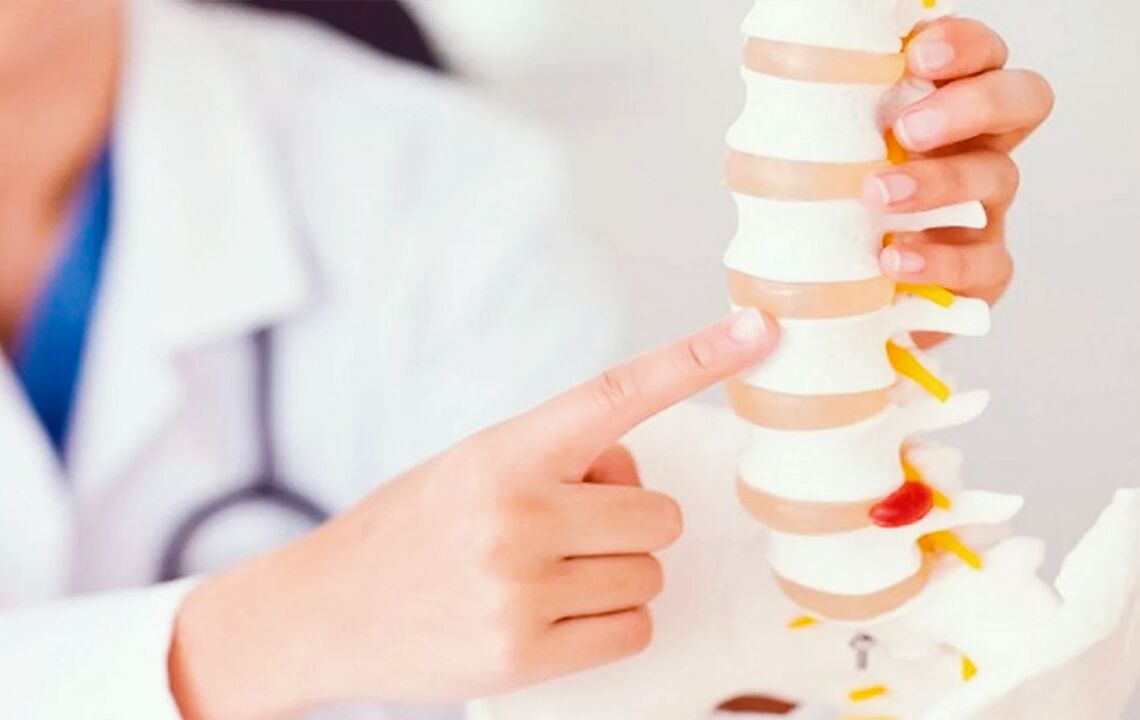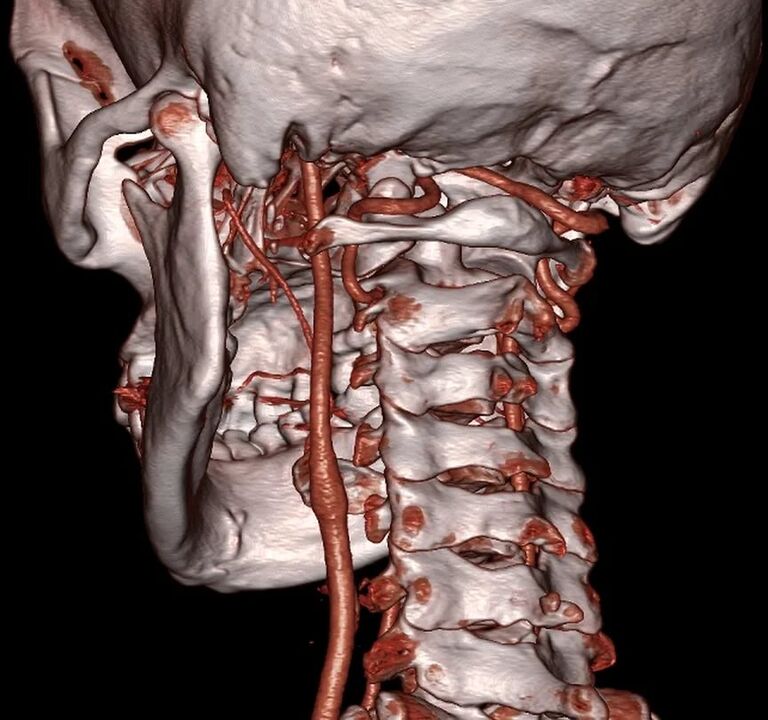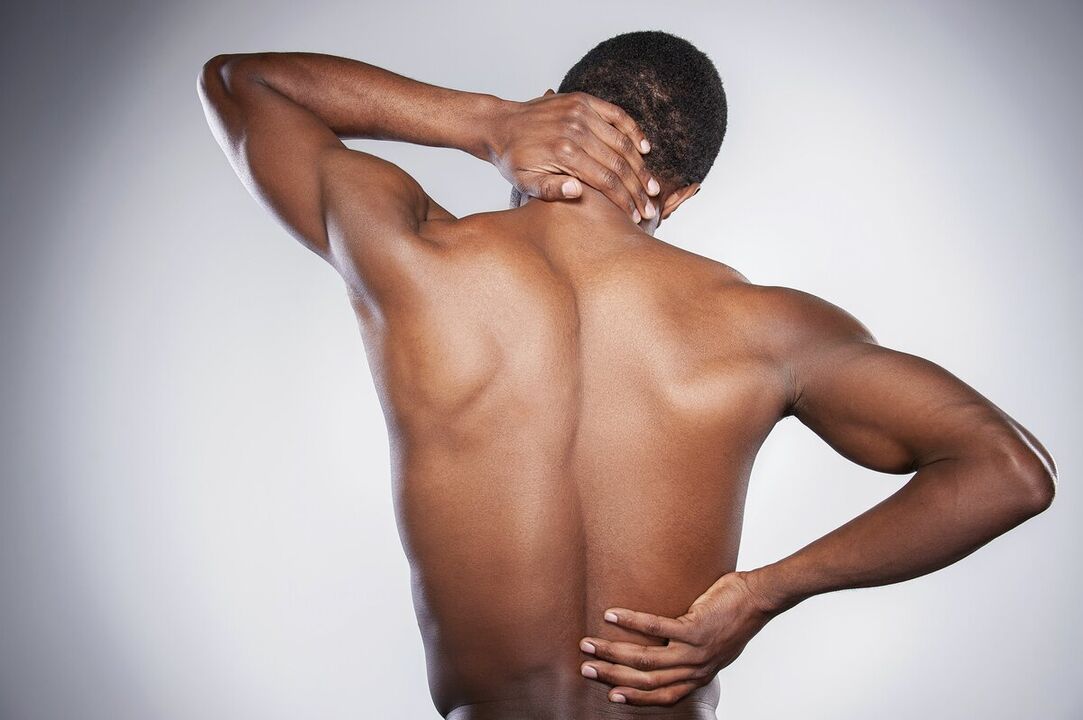Pain occurs when you don't expect it. Even the most self-confident person in these cases can get confused and frightened. The cause of the pain syndrome is often osteochondrosis. How is osteochondrosis of the cervical spine treated at home and how effective will the treatment be? Let's find out more.
What is osteochondrosis
Official medical sources interpret osteochondrosis as a degenerative disease affecting the intervertebral disc with the involvement of the adjacent vertebrae and joints. The elasticity of the intervertebral joint is compromised and the disc becomes thinner. It is necessary to understand how nutritional and metabolic processes occur in the intervertebral discs. This structural element is formed by cartilage tissue, there are no blood vessels here. The power is diffused, like a pump. When moving for squeezing, a lubricating fluid is released which is then absorbed again. If osteochondrosis of the cervical spine appears, physical therapy, massage and the full range of therapeutic techniques should be prescribed as soon as possible.
What changes occur in the spine and their symptoms
The following processes occur in the affected joint:
- the pulpy nucleus of the disc loses physiological moisture;
- cartilage loses its shape;
- loses its elasticity;
- change colour;
- dries;
- turns yellow;
- loses resistance to damage.

The consequence of this is a violation of the synchronization of movement in the adjacent segments of the spine, violation of the nerve roots. The main symptoms of degenerative changes will be pain, limited mobility, some forms of paresthesia ("crawling", tingling).
All these changes suggest the presence of osteochondrosis. How osteochondrosis of the cervical spine or any other is treated, we will talk further.
Why does osteochondrosis occur?
The causes of the onset of the disease include everything that disrupts the power of the disc:
- Congestion caused by static loads.
- Prolonged maintenance of unfavorable positions, especially sitting. There is a good saying: "If you can stand up - don't sit down, if you can lie down - don't stand up".
- Traumatic effects on endplates, fibers of the fibrous ring.

Common reasons include unbalanced nutrition, physical inactivity, insufficient development of the deep muscles that form the muscular corset. The stability of the spine is due to the complex interaction of the bone, muscle and nerve structures of the skeleton. The muscles of the abdomen and back are antagonistic, balancing each other. Therefore, the postulate "movement is life" remains as relevant as never before. Exercises can effectively affect degenerative disc disease of the cervical spine. Physical therapy is used both in a polyclinic and at home. Since the spine is made up of several sections, the disease can occur in any of them. The cervical and lumbar regions are most often exposed.
How does osteochondrosis of the cervical spine manifest itself?
Manifestations of osteochondrosis of various localization are combined in syndromes:
- cervical syndrome (reduced mobility of the shoulder joint, pain of a different nature);
- cervicocranialgia (pain in the back of the head, neck discomfort, there may be tinnitus, dizziness, palpitations, nausea);
- cervicobrachialgia or shoulder-scapular syndrome (neck pain running into the shoulder and arm).

If you are concerned about aching pain, often at night, with numbness, the diagnosis is likely to be confirmed: osteochondrosis of the cervicothoracic spine. The pain syndrome associated with the ailments of this department is called thoracalgia.
Physiotherapy at home
How osteochondrosis of the cervical spine is treated with drugs is described in many reference books. But in most cases, the effect of the drug is short-lived. Here physical therapy can come to the rescue.

- We stand against the wall and lean with the back of the head. Let's try to press on the wall with maximum force for a few seconds. Then we relax.
- We sit at the table, we lean our elbows. We rest the chin on the hands, trying to press on the palms, while trying to tilt the head or turn it to the side.
- Rest your head on your hands on the back of your head. Alternatively, press on them with the back of your head, then relax. Perform several repetitions with a hold of up to 10 seconds.
- Grab your head with your palms, alternately pressing on one hand or the other.
During exacerbations, exercises are performed with a duration of no more than 3-4 seconds and with moderate effort. Classes will slow down osteochondrosis of the cervical spine. Home exercises can be started after verifying that they have been performed correctly in a healthcare setting.
Massage without the help of a professional
If the diagnosis of osteochondrosis of the cervical spine is confirmed, massage will be one of the necessary treatment methods. In this case, it is not only a useful, but also irreplaceable procedure. Initially, it is better to take a professional course, and then perform simple techniques at home on your own. These techniques include the post-static muscle relaxation technique. The peculiarity of the method consists in the passive stretching of the muscle from the overload position in combination with massage elements. It is necessary to apply the technique after the spasmodic muscles have warmed up (bath, hot compress, kneading, stroking).

When using self-massage, the same techniques are used as the professional one. These are stroking, kneading, striking with precision, stroking, shaking. The massage is performed with warm, warm hands. Use massage oil to improve smoothness. The sequence of techniques is as follows:
- caress;
- shredding;
- knead;
- vibration (patting, shaking).
Acting on the osteochondrosis of the cervical spine, the massage begins and ends with the caress.
A little manual therapy
- We sit in a high-backed chair. We shake our heads with our hands, placing our thumbs on the cheekbones (more precisely, on the bumps under the eye sockets). We raise our eyes, take a breath and press the back of the head to the fingers. We resist up to a quarter of a minute, then exhaling we lean back in the chair and relax the muscles of the neck, tilting the head down. We repeat the technique several times. Then we wrap our fingers around the neck, closer to its top, slightly tilt the head forward. We press the fingers into the base of the skull, making them make a slow rotating movement. Gradually lower your fingers lower and lower, getting closer to the trapezius muscle. How osteochondrosis of the cervical spine is treated with the help of manual therapy can be seen in the following manipulations.
- We lie on our back, lowering our shoulders as much as possible. Place your hand on the sore side under your buttock, palm facing up. Put your other hand under your head, grabbing the back of your head and tilting your head away from the problematic side. While inhaling, press your head on your fingers for 15 seconds. As you exhale, relax and pull your head a little harder, stretching the sore muscle.

A set of measures in the treatment of osteochondrosis
Unfortunately, it is impossible to completely defeat cervical osteochondrosis. Treatment at home or in a medical facility should be comprehensive. This includes the use of:
- pain medications;
- muscle relaxants that help relieve muscle spasm;
- drugs with chondroprotective action;
- physiotherapy procedures;
- massage;
- Physical therapy;
- balanced diet.
After studying the medical literature, some conclusions can be drawn about how osteochondrosis of the cervical spine is treated, but giving up a treatment prescribed by professionals is a crime directed against one's health.





































